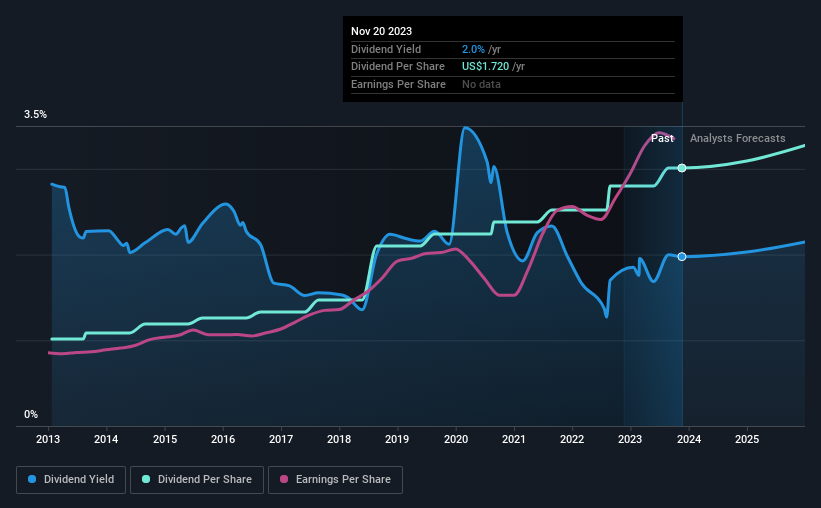BancFirst (NASDAQ:BANF) Will Pay A Larger Dividend Than Last Year At $0.43
BancFirst Corporation (NASDAQ:BANF) will increase its dividend from last year's comparable payment on the 16th of January to $0.43. Despite this raise, the dividend yield of 2.0% is only a modest boost to shareholder returns.
Check out our latest analysis for BancFirst
BancFirst's Dividend Forecasted To Be Well Covered By Earnings
While yield is important, another factor to consider about a company's dividend is whether the current payout levels are feasible.
BancFirst has a long history of paying out dividends, with its current track record at a minimum of 10 years. While past records don't necessarily translate into future results, the company's payout ratio of 24% also shows that BancFirst is able to comfortably pay dividends.
Looking forward, earnings per share is forecast to fall by 29.0% over the next 3 years. However, as estimated by analysts, the future payout ratio could be 35% over the same time period, which we think the company can easily maintain.
BancFirst Has A Solid Track Record
The company has a sustained record of paying dividends with very little fluctuation. Since 2013, the dividend has gone from $0.58 total annually to $1.72. This implies that the company grew its distributions at a yearly rate of about 11% over that duration. Rapidly growing dividends for a long time is a very valuable feature for an income stock.
The Dividend Looks Likely To Grow
Some investors will be chomping at the bit to buy some of the company's stock based on its dividend history. We are encouraged to see that BancFirst has grown earnings per share at 14% per year over the past five years. BancFirst definitely has the potential to grow its dividend in the future with earnings on an uptrend and a low payout ratio.
We Really Like BancFirst's Dividend
Overall, a dividend increase is always good, and we think that BancFirst is a strong income stock thanks to its track record and growing earnings. The distributions are easily covered by earnings, and there is plenty of cash being generated as well. If earnings do fall over the next 12 months, the dividend could be buffeted a little bit, but we don't think it should cause too much of a problem in the long term. Taking this all into consideration, this looks like it could be a good dividend opportunity.
Companies possessing a stable dividend policy will likely enjoy greater investor interest than those suffering from a more inconsistent approach. Meanwhile, despite the importance of dividend payments, they are not the only factors our readers should know when assessing a company. Taking the debate a bit further, we've identified 1 warning sign for BancFirst that investors need to be conscious of moving forward. If you are a dividend investor, you might also want to look at our curated list of high yield dividend stocks.
Have feedback on this article? Concerned about the content? Get in touch with us directly. Alternatively, email editorial-team (at) simplywallst.com.
This article by Simply Wall St is general in nature. We provide commentary based on historical data and analyst forecasts only using an unbiased methodology and our articles are not intended to be financial advice. It does not constitute a recommendation to buy or sell any stock, and does not take account of your objectives, or your financial situation. We aim to bring you long-term focused analysis driven by fundamental data. Note that our analysis may not factor in the latest price-sensitive company announcements or qualitative material. Simply Wall St has no position in any stocks mentioned.

